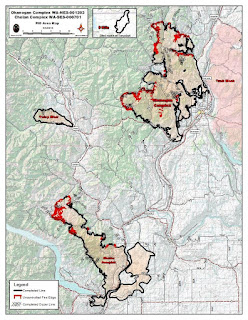So, what was the 2015 Risk Summit all about? It was about gathering U.S. Forest Service, Department of Interior, state partners, research and development, human factors, training, and many other groups together to have frank and open communications about Risk Management. Some of the discussion points included:
- Developing a comprehensive definition of wildland fire risk management and obtaining agreement and endorsement.
- Identifying a framework for full risk management development and implementation
- Identifying a stepwise timeframe for development and implementation that will achieve full implementation with the next 1-10 years.
- Establishing a foundation for optimizing coordination efforts among entities working in wildland fire risk management.
- Recognizing the “new normal.”
- Taking care of those doing difficult dangerous work.
- Developing tangible products or identified steps, time frames and responsibility.
- Building collective and cooperative energy, effort and focus, aka Cohesive Strategy.
Other discussion points included:
- Initial Attack – 2016 Chief’s Letter (Forest Service)
- Acknowledging that firefighting is a deadly business
- Clarifying the fire mission and discussing at all levels
- Being honest about the Wildland Urban Interface (WUI); we are going to perform community defense
- The value of common terminology: i.e., structure protection means different things to different audiences
- Structure fire suppression vs structure protection
- Not all fires are emergencies: take the time to engage in the process of good decision-making
- The process of risk assessment is an activity
- Change terminology to change behavior
- Change initial size-up to initial risk assessment
- Initial attack implies a strategy
- kNOw to Go
Our biggest challenge as wildland fire agencies is the coordination to move collectively in the same direction when it comes to Risk Management. The 2015 Risk Summit was an important step in dealing with this challenge!








